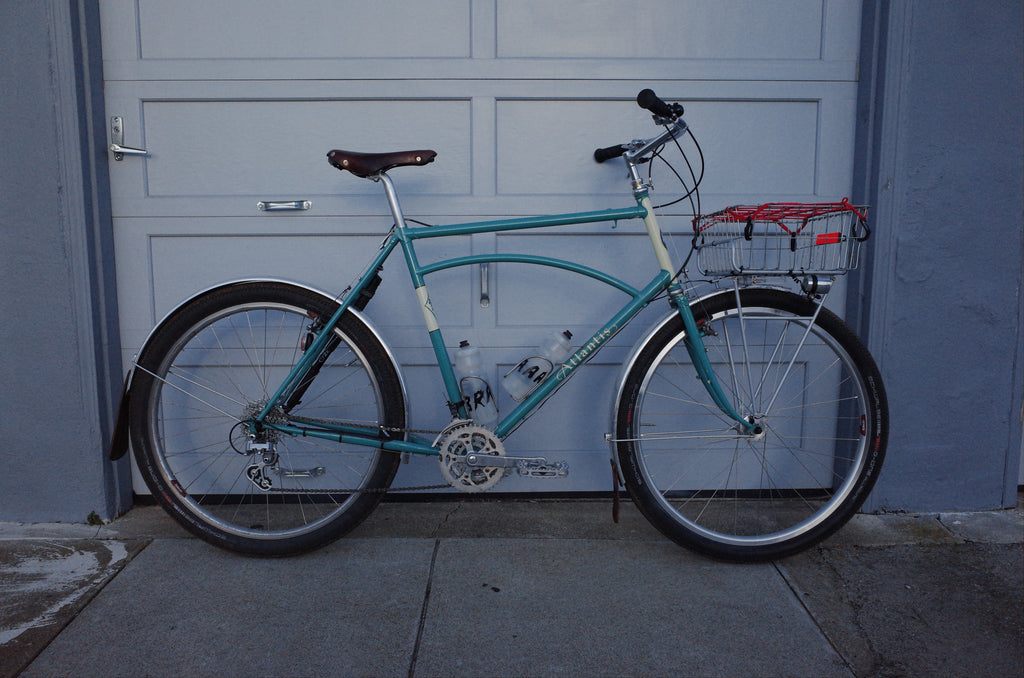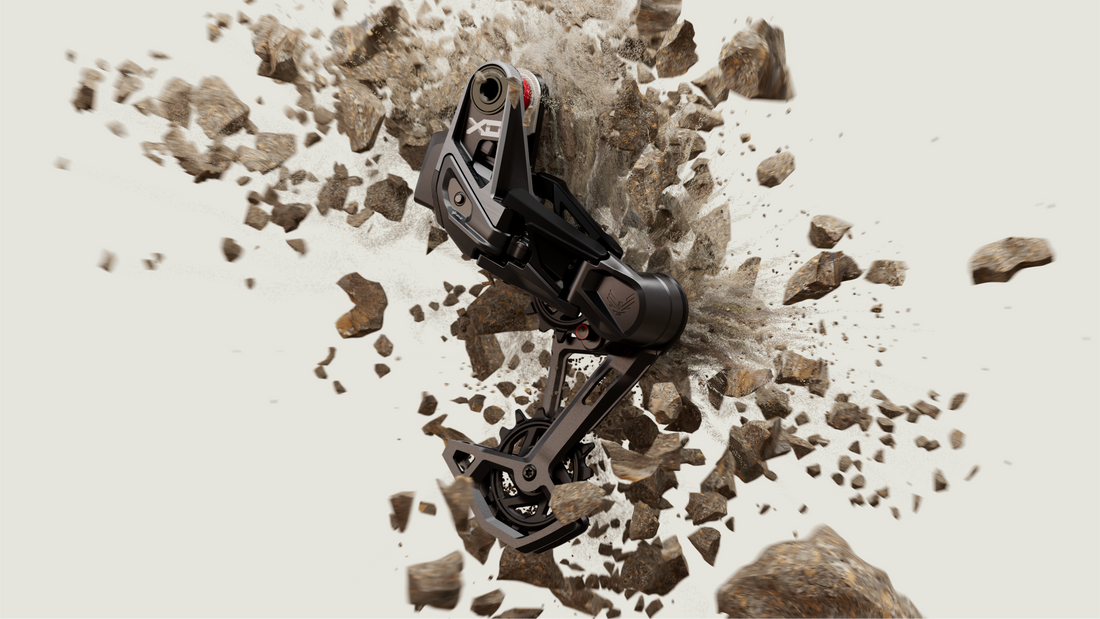So I guess drivetrains are a thing of the past and now it’s all about…Transmissions? SRAM just dropped its new Eagle Transmission and Stealth brakes on all of us the other day. As per The Radavist in its article, “With no derailleur hanger or adjustment screws, the aim of this system is to allow ‘flawless shifting under maximum power.’” Further, “[t]o maximize and optimize the capabilities of Transmission, you must outfit your bike with the complete component suite—an ecosystem, if you will—consisting of derailleur, crankset, chainring, chain, and controllers. Should you choose to use just a few parts on their own – like just adding a Transmission derailleur to your existing Eagle AXS drivetrain – SRAM claims that Transmission will not function properly for reasons described below.”
More proprietary and unable to be mixed with other SRAM stuff? I mean that’s more of the same and the niche stuff that can be mixed can be purchased from MicroShift or S-Ride or even in the form of the Nivex. For more mainstream, cutting-edge stuff, SRAM seems to be on top of its game (or at least just edged itself ahead of Shimano, which is all that seems to matter for SRAM these days).
The brakes and levers seem much improved with the levers optimized for internal routing which is nicer for the end user and an annoyance with servicing. The review for The Radavist seemed glowing with respect to improved modulation. I wonder what it’ll be like once we start seeing it here on some customer bikes. You tempted?

Just before this month’s rainy bs kicked up, I built my first wheel* using a dynamo hub. I was running rechargeables for the better part of the last 15 years while riding and finally had enough. Even with ‘long’ run times of eight hours, I found myself charging them every third day. Having even a couple of more things to charge after charging my shaver, phone, iPad, etc… It got old.
I was looking through one of our distributor’s sites for a dynamo hub and lighting system when I stumbled upon the Kasai dynamo hub. It's the variant that's able to be serviced at an LBS rather than requiring a lengthy warranty service plus disassembly of the wheel (looking at you SON). I already had a 32h Cliffhanger rim set aside for just this purpose so I snagged the Kasai. I’d heard that the drag on a hub like this was pretty noticeable and annoying so I had a bit of trepidation.
Once the wheel was built up, Artur and I brainstormed the least ugly routing for the wiring for my Busch + Muller Secula and got it connected to the Busch + Muller IQ-X that I installed on my front rack. Thankfully my front rack is drilled for internal dynamo light wiring so that was pretty easy.
I’ve been loving this set up a lot for the last couple of weeks. Even though the front lamp is for road-ish applications, it’s been wonderful on the trails in Golden Gate Park and poorly lit streets in the City. It casts a super wide beam that’s also pretty soft and not harsh so it doesn’t blind everyone like those ugly beams on newer cars. Plus, the drag on the front hub is a non-issue for me and really isn’t all that noticeable after all.
I just love that I never need to charge anything for my bike and, when the hub is toast, I can buy a replacement coil and pop it in myself without too much hassle. I like it so much that I got a thru-axle version for my next bike build, too. I don’t think that the Kasai/B+M combo is the one for everyone, but it’s been pretty good for me so far. I even found out that the real pretty Edelux light from SON has internals made by B+M for SON. I figured it was smarter to get a really good light for a whole lot less than something that’s priced so high mostly due to looks/hype.
*Artur was right there while I did so and honestly did like 65% of it lol

I had some long, not-so-fun screed about how drivers often try to teach cyclists lessons by swerving at them and being unsafe and blah blah blah. I decided to leave that off of this newsletter and instead continue to hew closer to my original intent with this final section of the newsletter: how we can get more people to ride bikes more often.
I was riding behind a pair of parents toting their little one on the back of one of their bikes the other day. It was rainy and cold and windy and yet here they were: commuting across town without a car. I began wondering why they were still commuting and riding even in the rain. I saw that each parent was on a cargo bike (his was a larger one, hers was a smaller one) and both were e-bikes. I don’t think the e-bike part is the most important thing to look at here though.
What each had that most commercially available bikes don’t have is worth noting: fenders, integrated lighting, comfy riding position, and ample cargo ability provided through racks and mounting points. Most bikes that I see sold to consumers are far racier than needed and kinda become only something to be used for recreating rather than riding. When they need to haul something, they drive instead. When they want to exercise in the rain, they go for a run or do an indoor activity instead.
To be clear, I didn’t think about writing this simply to have a reason to post another photo of my Riv (even though I do relish the opportunity). I’m posting it mostly because of how it embodies the qualities & features of the aforementioned e-bikes: fenders, integrated lighting, very comfortable (57mm/2.25” tires inflated to 30 psi help a lot as does the leather saddle), and plenty of hauling ability. Since most of the bikes that I see with those sort of features are e-bikes, I totally understand why people want to buy that kind of bike.
I think that the primary issue here has to do with keeping up appearances. Riding a bike with fenders and a rack of course means you’re not a serious cyclist and you’re a novice. How unfortunate that this is the prevailing attitude. Just because I have a dad bike doesn’t mean I don’t also ride it to Olema for a late lunch; that I log 150-225 miles a week riding it; that I can ride 85% of the unpaved paths/trails in Marin; that I ride 7 days a week without using a car more than once or twice.
The above attitude means that more novice riders often buy supremely impractical bikes that they end up riding less and less. The proliferation of e-bikes has to do with how they’ve been marketed: car replacements that are great for hauling a whole lot of stuff. All bikes can be used to this end. I believe the cycling industry needs to work harder to change its marketing tactics rather than capitulate and make more e-bikes. That’s the same attitude that's led to the development of self-driving cars to deal with horrid traffic conditions rather than seek to improve infrastructure and strive to make our society less car-centric. E-bikes are a band-aid, not an actual advancement. Bikes can be functional and racy. One quality needn’t be chosen to the detriment of the other.
Until next time,
Luke <3
P.S.: All of our old newsletters are now on our site as blog posts here.

